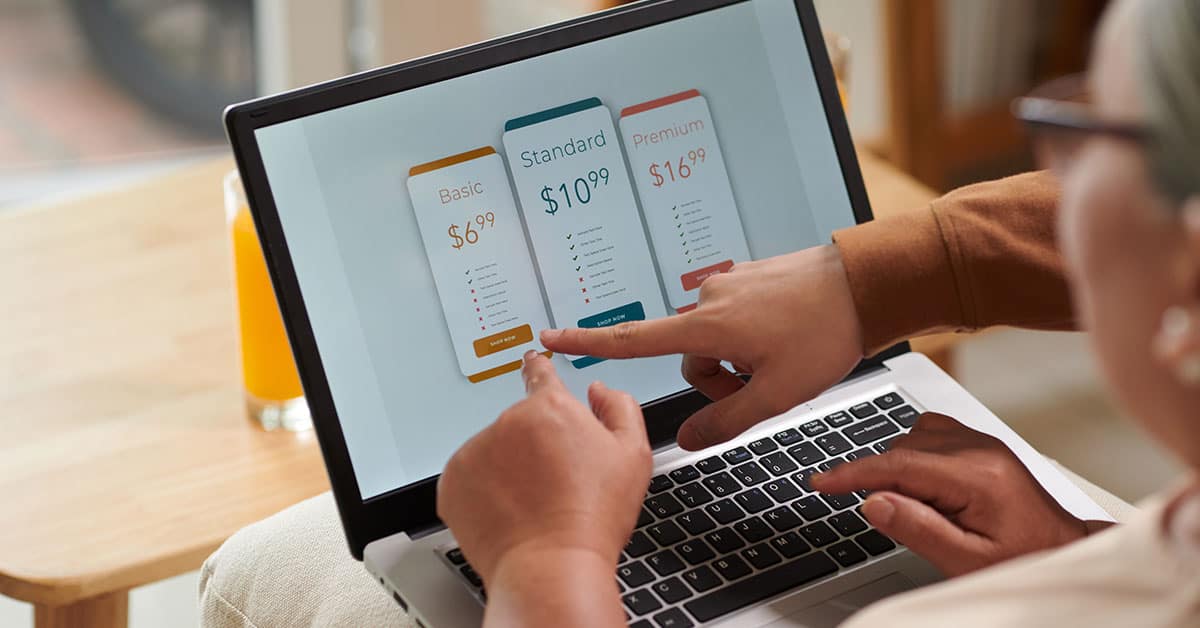Web design, SEO, and marketing blog
Digital Marketing Trends: Web Design, SEO, and Marketing Tips for Success

What is a shopify developer

Inclusive web design best practices

How Much Does Web Design Cost in London
Let's face it – the digital world is moving at breakneck speed, and keeping up feels like trying to catch a train that's already left the station. But here's the thing: if you're running a business in 2024, you can't afford to get left behind. The lines between web design, SEO, and marketing have gotten so blurry they're practically non-existent. Whether you're bootstrapping a startup from your garage, designing websites for clients, or working with a fancy agency, I've got some real talk about what's actually working right now. Grab a coffee and let's dig in.
How can SEO improve my web design and marketing strategy?
You know what? SEO isn't just some technical mumbo-jumbo that developers throw around to sound smart. It's the secret sauce that ties everything together. Think of it like this: you can have the prettiest website in the world, but if nobody can find it, what's the point? That's where SEO comes in – it's basically your website's best friend, making sure the right people find you at the right time.
Here's where it gets interesting. Every few years, someone declares "SEO is dead!" (usually while trying to sell you something else). But let me tell you – that's absolute nonsense. What's really happening is that SEO is getting smarter, just like we are. Search engines aren't looking for websites that stuff keywords everywhere anymore. They want the real deal – sites that actually help people solve problems.
When you bake SEO into your web design from day one, magic happens. Your site doesn't just look good; it works hard for you 24/7. I've seen businesses transform their entire online game by understanding this simple truth: good SEO and smart marketing aren't separate things – they're two sides of the same coin.
What are the essential SEO elements every website should have?
Alright, let's get down to brass tacks. If your website were a house, these SEO elements would be the foundation, walls, and roof. Skip any of these, and you're basically building on quicksand.
First up: get yourself on a solid platform. WordPress isn't just popular because everyone uses it – it's popular because it actually works. Search engines can read WordPress sites like an open book, which is exactly what you want. But here's where most people mess up: they think SEO is just about cramming keywords everywhere. Wrong! It's about creating content that answers real questions real people are asking.
Let me paint you a picture. Your meta titles and descriptions? They're like your website's handshake – first impressions matter. Your URLs should be clean enough to read out loud without sounding like you're having a stroke. And please, for the love of all that is holy, don't forget about your images. Give them descriptive names and alt text. "IMG_12345.jpg" tells nobody nothing.
Speed matters too. Nobody – and I mean nobody – wants to wait around for your site to load. We're all impatient these days (guilty as charged!). A slow site is like showing up late to a first date – you've already made a bad impression before you even get started.
How does mobile-first indexing affect my SEO ranking?
Remember when mobile websites were those weird, stripped-down versions of the "real" site? Yeah, those days are dead and buried. Google basically said, "Hey, most people are on their phones now, so that's what we're going to judge you on." And boom – mobile-first indexing became the new sheriff in town.
This shift hit some businesses like a ton of bricks. I've watched companies lose half their traffic overnight because they ignored mobile users. Ouch, right? But here's what really grinds my gears: some folks still think mobile optimization is optional. News flash: it's not. If your site looks terrible on a phone, you might as well put up a "closed for business" sign.
The cool thing is, once you get this right, everything else falls into place. Mobile users are quick to judge – they'll bounce faster than a rubber ball if your site doesn't load properly. But nail the mobile experience? They'll stick around, explore, maybe even buy something. It's not rocket science, but it does take some effort to get right.
What role does AI play in modern SEO practices?
OK, let's talk about the elephant in the room – AI. It's everywhere, and yes, it's changing the SEO game in ways we're still figuring out. Google's using AI (they've got fancy names for their algorithms like BERT and MUM – sounds like a comedy duo, doesn't it?). But what does this mean for regular folks like us?
Here's the deal: AI is getting scary good at understanding what people actually want when they search for something. You can't trick it anymore with keyword stuffing or other old-school tactics. The machines are learning, and they're getting smarter every day. Kind of creepy? Maybe. But also kind of awesome if you know how to work with it.
I've seen businesses completely transform their content game using AI tools. These tools can spot patterns in search behavior that would take humans months to figure out. They can predict what topics are about to blow up before they actually do. It's like having a crystal ball, except it actually works. But here's my advice: AI is a tool, not a replacement for human creativity. The businesses crushing it right now? They're using AI to enhance their human insights, not replace them.
What are the latest web design trends that boost marketing performance?
Web design trends come and go faster than fashion trends (remember when everything had to have a shadow effect?). But the trends sticking around in 2024? They're the ones that actually make sense for both humans and search engines.
Dark mode isn't just for night owls anymore. It's become a legit design choice that makes your calls-to-action pop like neon signs. I've seen conversion rates jump just from adding a dark mode toggle. Wild, right? And those tiny animations when you hover over stuff? They're not just eye candy – they're breadcrumbs guiding users exactly where you want them to go.
Voice search is the dark horse nobody saw coming. People are literally talking to their devices now (I do it all the time – "Hey Google, find me the best pizza near me"). If your site isn't ready for voice queries, you're missing out on a whole chunk of potential customers. And don't even get me started on accessibility – it's not just the right thing to do anymore, it's good business. Make your site work for everyone, and everyone becomes a potential customer.
AR features? They're not just for Pokemon Go anymore. E-commerce sites letting customers "try on" products virtually are seeing fewer returns and happier customers. It's like bringing the store to their living room.
How do minimalist design trends impact user experience?
Minimalism in web design is having a major moment, and honestly? Thank goodness. We've all been on those websites that throw everything at you at once – flashing banners, auto-play videos, pop-ups galore. It's like walking into a store where five salespeople rush you at once. No thanks!
Here's what I love about minimalist design: it forces you to make choices. What really matters? What's just fluff? When you strip away all the nonsense, what's left better be good. And guess what? Users can smell authenticity from a mile away. A clean, simple site says "we respect your time" louder than any marketing copy ever could.
But – and this is a big but – minimalism isn't about being boring. I've seen minimalist sites that are absolutely stunning. They use space like artists use canvas. Every element has a purpose, every button has a reason to exist. The trick is knowing when to stop. Strip away too much, and users get lost. Leave too much, and you're not really minimalist anymore. It's a balancing act, like everything else in life.
Why are interactive elements crucial for engagement?
Want to know a secret? People are basically big kids. We love to touch, click, drag, and play with stuff. That's why interactive elements work so well – they turn passive scrolling into active participation. And when people participate, they remember.
I'll give you an example. Last week, I spent 10 minutes on a mortgage calculator even though I'm not buying a house. Why? Because sliding those little bars around was oddly satisfying. That's the power of interactivity – it hooks you in ways static content never could. Plus, every second someone spends playing with your interactive widget is another second they're not on your competitor's site.
The data backs this up big time. Interactive content gets shared more, linked to more, and remembered more. It's like the difference between watching a cooking show and actually cooking the meal yourself. Which one do you think you'll remember better? But here's my warning: don't go overboard. Too many bells and whistles, and your site becomes a circus. Pick a few interactive elements that actually serve a purpose, and do them really well.
How can responsive design improve my search engine ranking?
Let me be blunt: if your website isn't responsive in 2024, you're basically shooting yourself in the foot. With a cannon. While blindfolded. Google straight-up told everyone that mobile-friendly sites get priority, and they weren't kidding around.
But here's what kills me – some people still think responsive design means making everything smaller for phones. Nope! It means your site should look amazing whether someone's viewing it on a massive desktop monitor, a tablet in bed, or a phone on the subway. Each device gets the experience it deserves, not some watered-down compromise.
The beauty of responsive design? It solves so many problems at once. No more maintaining separate mobile and desktop sites (what a nightmare that was!). No more worrying about duplicate content penalties. Just one site that morphs like a chameleon to fit whatever screen it's on. And the best part? Users love it. They stay longer, click more, and – here's the kicker – they actually buy stuff. Who would've thought that making things easier for people would make them like you more?
How can I create effective blog posts that drive traffic through search engine optimization?
Writing blog posts that actually drive traffic? It's part science, part art, and honestly, part luck. But mostly, it's about understanding that you're writing for humans first, search engines second. I know, I know – everyone says that. But how many actually do it?
Here's my process (stolen and refined from smarter people than me): Start by figuring out what keeps your audience up at night. What questions are they typing into Google at 2 AM? That's your goldmine right there. Then, answer those questions like you're explaining it to a friend over drinks – clear, honest, maybe with a story or two thrown in.
The technical stuff matters too, don't get me wrong. Your headings should make sense if someone's just skimming (because let's be real, that's what most of us do). Your URLs shouldn't look like your cat walked across the keyboard. And please, please add images that actually relate to what you're talking about. Stock photos of people in suits shaking hands? We can all see right through that.
But here's the real secret: consistency beats perfection every time. One amazing blog post won't change your life. But posting helpful content regularly? That builds trust, authority, and yeah – traffic. It's like going to the gym. One workout won't give you abs, but showing up consistently will get you somewhere.
What keyword research strategies work best for blog content?
Keyword research used to be simple – find words with high search volume, stuff them in your content, profit. Those days are long gone, my friend. Now it's like playing 3D chess while juggling.
The smart money's on long-tail keywords now. Instead of fighting a million other sites for "best pizza," why not go for "best late-night pizza delivery in downtown Portland"? Sure, fewer people search for it, but the ones who do? They're ready to order. They've got their credit card out and everything.
Here's a trick I love: eavesdrop on your customers. What questions do they ask in emails? What complaints show up in reviews? What are they typing into your site search? That's pure gold for keyword ideas. Real people asking real questions in their own words – you can't fake that authenticity.
And don't sleep on seasonal trends. Tax software in January? Recipe blogs before Thanksgiving? Gym content in December (New Year's resolutions are coming)? Timing isn't everything, but it's a lot. The businesses killing it with content aren't just writing about the right things – they're writing about them at the right time.
How long should blog posts be for optimal SEO ranking?
Ah, the million-dollar question. How long should your blog posts be? Short answer: as long as they need to be. Long answer: probably longer than you think.
Look, I get it. We're all busy. Who has time to write 2,000-word blog posts? But here's the uncomfortable truth: Google tends to favor meaty content that really digs into a topic. Those 500-word posts you're cranking out? They're competing against 2,500-word guides that cover every angle. Guess who usually wins?
But – and this is important – long doesn't mean boring. I'd rather read 500 words of pure gold than 2,500 words of fluff any day. The key is making every word earn its place. Can you explain it better with an example? Add it. Got a relevant story? Tell it. But if you're just repeating yourself to hit a word count? Stop. Just stop.
Here's my rule of thumb: write until you've thoroughly answered the question, then stop. Sometimes that's 800 words. Sometimes it's 3,000. The topic dictates the length, not some arbitrary number you read in a marketing blog. Quality beats quantity, but quality at quantity? That's the sweet spot.
How can I use internal link building to strengthen my blog's authority?
Internal linking is like the secret network of tunnels under your website. Done right, it helps visitors (and search engines) discover all your best stuff. Done wrong, it's just annoying.
Think of your content like a spider web. Your most important pages sit in the middle, with threads connecting out to related content. Every link is a path for readers to go deeper down the rabbit hole. But here's where people mess up – they link just to link. "Click here for more" – more what? Be specific! If you're talking about email marketing and you've got a killer guide on subject lines, link to it with text that actually describes what they'll find.
The power move? Go back through your old content and add links to your new stuff. That post from six months ago about social media? It could probably use a link to your new piece on Instagram Reels. It's like introducing your content to each other at a party. "Hey, old post about Facebook ads, meet new post about iOS privacy changes. You two should talk!"
And please, don't be stingy with your links. Some people act like internal links are precious resources to be hoarded. They're not! The more you connect your content, the stronger your whole site becomes. It's not a zero-sum game – when one page wins, they all win.
What digital marketing campaign strategies deliver the best ROI?
Want to know what really works in digital marketing? The stuff that actually puts money in your pocket? Buckle up, because the answer might surprise you.
The campaigns that crush it all have one thing in common: they know exactly who they're talking to and what those people want. Sounds simple, right? But you'd be amazed how many businesses are out there shouting into the void, hoping someone – anyone – will listen. The winners? They're having conversations with specific people about specific problems.
Email marketing – yeah, boring old email – still delivers insane ROI. But not those "Dear Valued Customer" disasters. I'm talking about emails that feel like they're from a friend who gets you. Segmented, personalized, actually helpful emails. The kind you don't immediately delete.
And here's something nobody talks about enough: the best ROI often comes from fixing what's broken before trying new things. That checkout process that takes 47 steps? Fix it. That landing page with the confusing headline? Clarify it. Sometimes the biggest wins come from the smallest tweaks. But hey, that's not as sexy as the latest social media platform, so people ignore it. Their loss, your gain.

